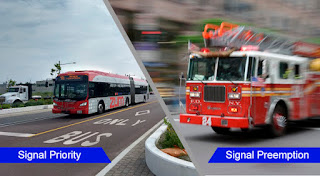Understanding Traffic Signal Preemption: Enhancing Mobility for Priority Vehicles
Traffic Signal Preemption (TSP) is an advanced traffic control solution designed to optimize the flow of priority vehicles such as public transit, emergency services, and municipal fleets at signalized intersections. The system allows these vehicles to receive preferential treatment by adjusting traffic light phases to minimize delays and improve overall efficiency.
TSP operates through the use of specialized hardware—such as vehicle detection sensors and intelligent signal controllers—that identifies approaching priority vehicles and modifies the signal sequence accordingly. This reduces stop times, enhances safety, and increases the reliability of services like buses, ambulances, fire trucks, and other essential transport systems.
Types of Traffic Signal Preemption Techniques:
Various strategies are used depending on operational needs:
Passive Preemption
Early Green (Red Light Shortening)
Green Extension
Dedicated Priority Phases
Phase Skipping or Rotation
Adaptive or Real-Time Control
Common Preemption Strategies:
TSP strategies may include:
Adaptive Preemption – Real-time decisions based on traffic data.
Conditional Preemption – Triggered only under specific conditions.
Actuated Preemption – Initiated by vehicle detection.
Benefits in Urban Environments:
Traffic Signal Preemption is widely adopted to improve mobility in congested city areas. Studies indicate it can reduce travel times by up to 20% and lower delays for buses and emergency vehicles by as much as 50% during peak hours. The system enhances not only efficiency but also road safety for both operators and the general public.
Contact Us:
Phone: 210-607-0100
Fax: 210-607-0105
Email: info@emtracsystems.com
Website: www.emtracsystems.com




Comments
Post a Comment